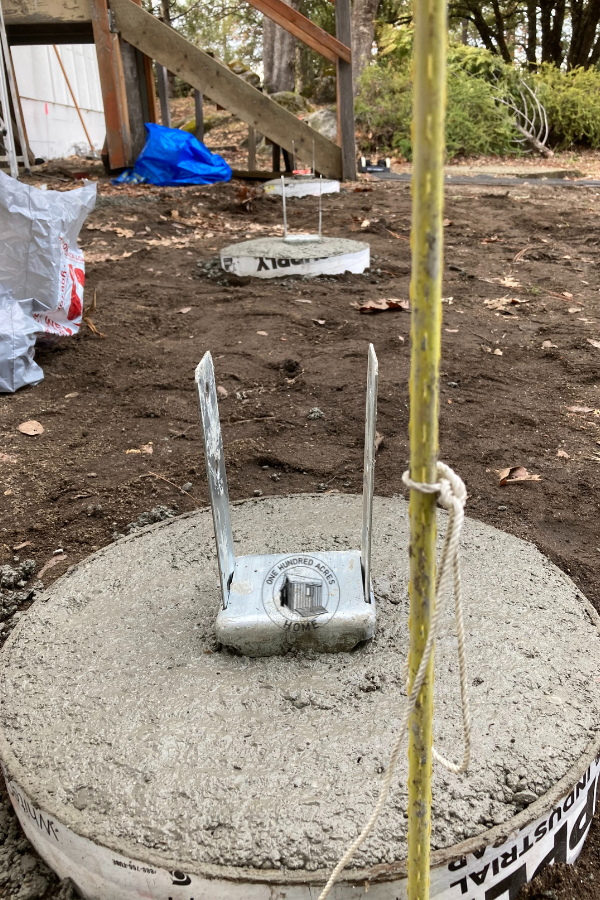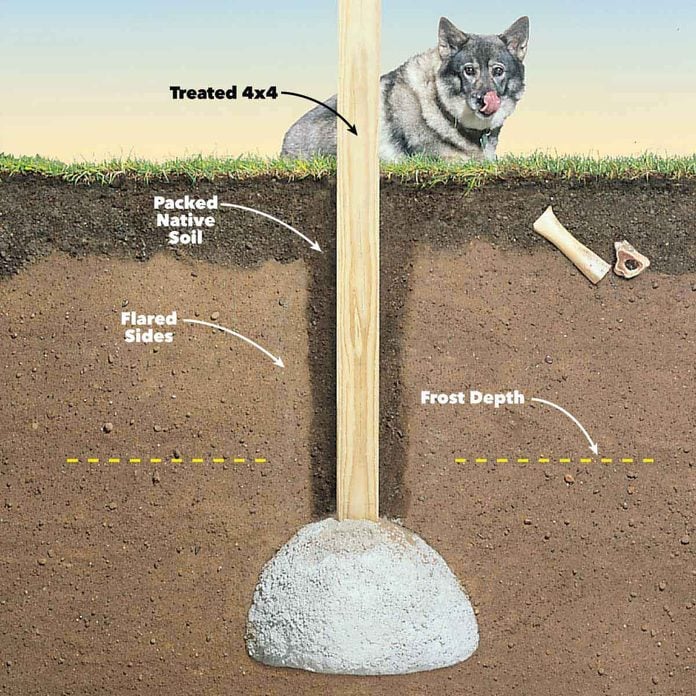Deck Footings Demystified: Your Blueprint for a Safe, Durable Outdoor Place
Deck Footings Demystified: Your Blueprint for a Safe, Durable Outdoor Place
Blog Article
Picking the Right Deck Footings for Stability and Longevity
When it concerns constructing a deck, among the most essential choices you will certainly make is choosing the ideal footings for stability and sturdiness. The long life and safety and security of your deck depend heavily on the type of grounds you pick, as they offer the necessary assistance and stability to stand up to the test of time. With a myriad of options readily available, it can be frustrating to figure out which grounds are best suited for your particular requirements. In this conversation, we will discover the different types of deck footings, take into consideration the vital elements to weigh when making a decision, and explore the benefits and drawbacks of different alternatives. By the end, you will have a more clear understanding of the selections available and be better furnished to make an educated choice for your deck project.
Kinds of Deck Footings
These grounds are composed of a cylindrical opening filled up with concrete, which provides a solid foundation for the deck messages. Concrete pier grounds are fairly easy to install and provide superb stability, making them a popular choice for several deck tasks.
These grounds are installed by screwing them into the ground, which creates a safe foundation for the deck. They likewise allow for easy adjustment and leveling of the deck if needed.
Additionally, some builders select precast concrete grounds. These footings are made of sturdy concrete and be available in different sizes and shapes to fit various deck designs. Precast concrete footings are convenient to set up and supply a stable base for the deck framework.
Finally, one more option is the post-in-anchor footing system. This kind of footing involves driving a steel support right into the ground and attaching it to the deck article. It supplies versatility in regards to placing the deck blog posts and appropriates for decks with light-weight frameworks.
When picking the best kind of deck ground, it is vital to think about elements such as dirt conditions, deck load, and regional building codes (Deck Footings). Consulting with a specialist contractor or structural designer can help make sure the proper ground is selected for a secure and secure deck
Elements to Take Into Consideration When Picking Grounds
When choosing the appropriate footings for a deck, it is vital to very carefully take into consideration different factors such as dirt conditions, deck tons, and adherence to local building codes. These aspects play a substantial role in ensuring the stability and sturdiness of the deck framework.
The type of dirt on which the deck will be constructed identifies the kind of grounds needed. On the other hand, decks developed on clay or expansive soils may need footings that can accommodate the soil's tendency to increase and contract.
An additional crucial aspect is the deck lots. The weight of the deck, including the materials used and any type of prospective live loads such as furniture or events, need to be considered when selecting footings. The footings need to be designed to birth the weight of the deck and disperse it evenly to stop any type of structural issues or failings.
Lastly, adherence to local building ordinance is extremely important. Structure codes vary from area to area, and it is necessary to adhere to the particular requirements set by the regional authorities. Deck Footings. These codes make certain that the deck is built securely and fulfills the required criteria for architectural stability and load-bearing capacity
Concrete Grounds: Disadvantages and pros

Concrete grounds use numerous benefits and drawbacks when utilized as the foundation for a deck. On the positive side, concrete grounds offer outstanding security and toughness.
An additional advantage of concrete footings is their flexibility. They can be poured into different sizes and shapes to suit numerous deck layouts and configurations. Concrete footings can be tailored to fit the particular demands and needs of the deck structure.
Nevertheless, there are additionally some downsides to utilizing concrete grounds. One major drawback is the expense and labor associated with their installment. Concrete footings require excavation and frequently require the support of heavy machinery. This can boost the overall cost of the deck job and may require expert aid.

Helical Piers Vs. Sonotubes: Which Is Better?
In considering the structure choices for a deck, the comparison in between helical piers and sonotubes is vital in establishing the remarkable option. Helical piers, likewise understood as screw piles, are steel shafts with helical plates affixed to them. They are twisted into the ground making use of hydraulic equipment, providing a secure and durable foundation for the deck. On the other hand, sonotubes are round types constructed from cardboard or fiber material that are full of concrete. They are placed in a hole explored the ground and offer assistance for the deck.
The helical plates on the piers create a solid grasp with the browse around this web-site dirt, changing or stopping any kind of movement of the deck. Sonotubes, on the various other hand, rely exclusively on the concrete filling up for security, which may not supply the very same degree of strength and resistance.
In terms of installation, helical piers are reasonably much easier and faster to mount compared to sonotubes. The hydraulic machinery utilized to twist the piers right into the ground makes look at these guys sure a fast and efficient process. Sonotubes, on the various other hand, require excavating openings and pouring concrete, which can be taxing and labor-intensive.
In addition, helical piers are a more flexible alternative. If required, they can be utilized in various dirt problems and can be readjusted or strengthened. Sonotubes, on the other hand, may require added support, such as rebar, in specific soil problems or locations with high tons demands.
Selecting the Right Footings for Your Deck's Measurements
For ideal structural honesty, it is vital to thoroughly pick the suitable footings that line up with the dimensions of your deck. The measurements of your deck, including its size, size, and height, play a considerable role in figuring out the kind and size of grounds needed.
When choosing footings for your deck, it is vital to consider the load-bearing capacity of the dirt. The weight of the deck, integrated with the weight of any type of furnishings or people on it, puts in a substantial pressure on the footings (Deck Footings). As a result, it is important to select grounds that can appropriately sustain this weight without sinking or moving over time.
The shapes and size of the grounds need to likewise be taken into consideration. Larger decks with higher dimensions call for bigger grounds to offer adequate stability and assistance. The form of the footings, whether they are rounded or square, depends upon the style and format of the deck. Furthermore, the depth at which the footings are mounted should be figured out based on the frost line in your area to stop any heaving or changing as a result of freezing temperatures.
Verdict
To conclude, choosing the appropriate deck footings is important for making sure stability and sturdiness. Elements such as the kind of footings, the deck's measurements, and the benefits and drawbacks of various alternatives must be taken into consideration. Concrete grounds supply stamina and longevity, however might be much more pricey and lengthy to set up. Helical piers and sonotubes have their very own advantages and negative aspects. Eventually, selecting the ideal grounds for your deck's specific demands is necessary for a lasting and successful framework.
These grounds are composed of a round hole filled with concrete, which offers a solid foundation for the deck articles. Concrete pier grounds are reasonably very easy to Recommended Reading install and offer outstanding stability, making them a prominent option for lots of deck tasks.
Precast concrete grounds are hassle-free to mount and give a stable base for the deck structure.
It offers adaptability in terms of placing the deck posts and is suitable for decks with lightweight frameworks.
Concrete grounds use several advantages and drawbacks when used as the structure for a deck.
Report this page